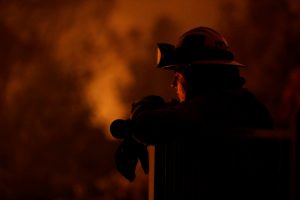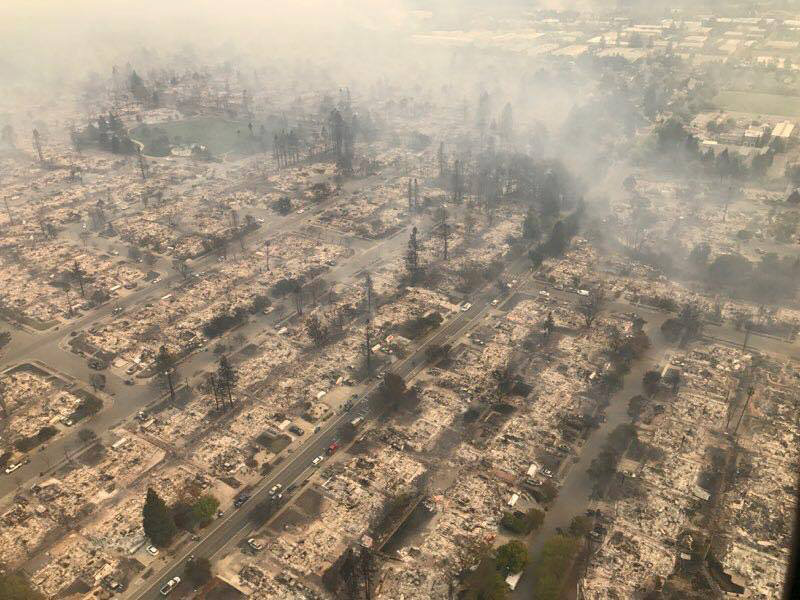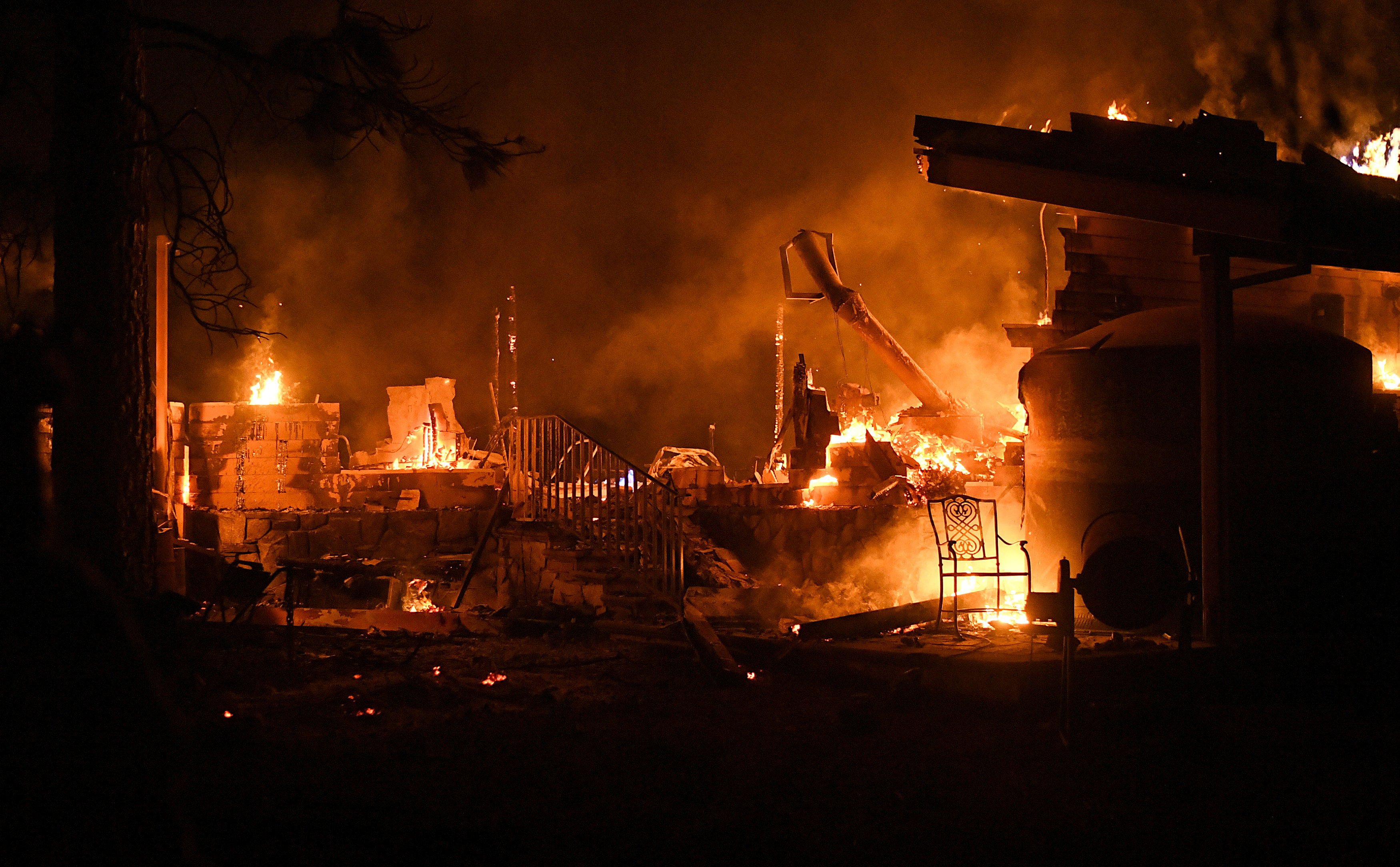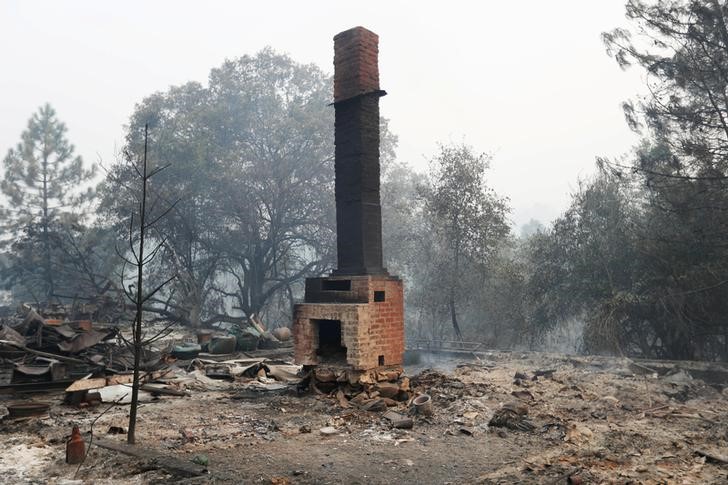
By Fred Greaves
REDDING, Calif. (Reuters) – A fast-growing northern California wildfire killed a second firefighter on Friday after high winds drove it into the city of Redding, prompting mass evacuations, destroying scores of homes and threatening some 5,000 other dwellings and businesses, officials said.
Flames raging in California’s scenic Shasta-Trinity area erupted late Thursday into a firestorm that jumped across the Sacramento River and swept into the western side of Redding, home to about 90,000 people, forcing residents to flee for their lives.
Firefighters and police “went into life-safety mode,” hustling door to door to usher civilians out of harm’s way, said Scott McLean, a spokesman for the California Department of Forestry and Fire Protection (CalFire).
Erratic winds blowing with gale force on Thursday night whipped the blaze into a frenzy, creating fire tornadoes that uprooted trees and tore into structures. “It was like a Tasmanian devil,” McLean told Reuters.
Some 37,000 people remained under evacuation orders on Friday, as flames continued to burn in pockets of the city’s west side, he said.
CalFire reported 65 structures destroyed by the blaze, but McLean called that tally a “placeholder” figure that would grow significantly, with the number of homes lost likely to run into “the hundreds” as the scope of devastation was fully assessed.
Nearly 5,000 homes were listed by CalFire as threatened.

Cal Fire firefighter Zach Hallums watches as fire burns in a canyon below homes as crews battle the Carr Fire, west of Redding, California, U.S., July 27, 2018. REUTERS/Fred Greaves
CURTAIN OF SMOKE
The Carr Fire’s footprint grew by 60 percent overnight and by Friday morning had scorched 44,450 acres (18,000 hectares), CalFire officials said. The blaze was just 3 percent contained as ground crews, water-dropping helicopters and airplane tankers battled the flames for a fifth day.
A curtain of smoke and flames loomed over low-slung buildings in Redding early on Friday, with forecasts calling for wind gusts of 25 miles (40 km) per hour and temperatures of 110 Fahrenheit (43 Celsius).
“When you’re dealing with temperatures that high, it’s really, really hot heat,” said Cal Fire spokesman Scott Kenney in a phone interview. “Stress, as far as heat exhaustion and heat stroke, are really serious situations that a firefighter can get into, so the tactics kind of get hindered by temperatures that high.”
The Carr Fire was one of nearly 90 large blazes burning nationally, most of them across the American West. One of those prompted the closure of much of Yosemite National Park in California.
Wildfires have blackened an estimated 4.15 million acres (1.68 million hectares) in the United States this year. That is well above average for the same period over the past 10 years but down from 5.27 million acres (2.13 million hectares) burned in the first seven months of 2017, the National Interagency Fire Center reported.
Roads out of Redding, about 150 miles (240 km) north of Sacramento, were jammed overnight as motorists tried to escape the flames, social media postings showed. Interstate 5, which runs from the Mexico border to Canada, crosses through the city.
The blaze on Thursday killed a bulldozer operator working with fire teams to clear brush around the fire. A member of the Redding Fire Department was also reported killed on Friday. A Redding hospital said it had treated eight people, including three firefighters.
THOUSANDS OF BUILDINGS IMPERILED
Rob Wright, 61, and his wife stayed to fight off flames with a high-powered water hose.
“We were fortunate enough that the wind changed hours ago and it is pushing the fire back,” said Wright at about 1:15 a.m. local time. “We are just waiting it out … crossing our fingers and hoping for the best.”
Video and images posted on social media showed flames engulfing structures, as an orange glow lit up the night sky.
A Red Cross employee told local ABC affiliate KRCR-TV some 500 people took shelter in an evacuation center at Shasta College.
More than 3,000 customers had lost power in the area, according to utility PG&E.
The Carr Fire was one of three fierce blazes threatening large populated areas.
Cal Fire said the Cranston Fire, about 110 miles (177 km) east of Los Angeles had blackened 11,500 acres (4,650 hectares) and was only 3 percent contained. The Ferguson Fire near Yosemite, which has charred 45,911 acres (18,500 hectares), was 29 percent contained.
A 32-year-old man was charged with setting the Cranston fire along with eight others. Brandon N. McGlover faces a potential life sentence if convicted of the charges and is being held on a $1 million bond.
(Additional reporting by Brendan O’Brien in Milwaukee, Tea Kvetenadze in New York and Makini Brice in Washington, Writing by Scott Malone and Steve Gorman; Editing by Bill Tarrant and James Dalgleish)












